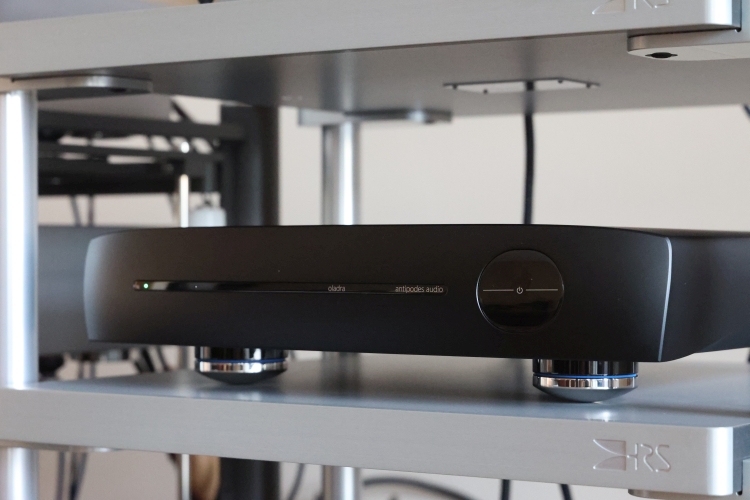
Review samples supplied by Antipodes Audio
Retail price (world) USD 29.000 excluding storage
Upgrade price G3 to G4 USD 4.000
Storage can be included at purchase or later installed by the user
Available in Black or Silver
The Antipodes Oladra Music Server was introduced in April 2023 as the company’s brand new flagship, featuring a brand new style language with its beautiful sculpted and very heavy solid aluminum enclosure. As I found during my review, the Oladra offered all of the full-blooded, richly saturated, and smoothly organic sound that made Antipodes servers famous whilst increasing articulation, transient sharpness, resolution, and transparency to new levels. From the very first notes of music it played, it was clear that this beauty was indeed well deserving of its flagship moniker.
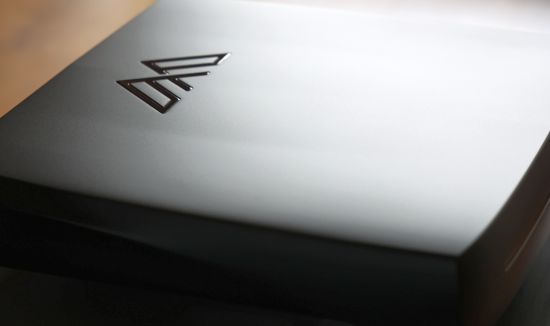
But development never stands still at Antipodes HQ. Breakthrough developments led to G4 Oladra technology, which triggered the release of updates for the Oladra server and all other models.
I’ve heard some disapproving voices regarding the timing of the Oladra update, so shortly after the model’s introduction, which I can understand. But on the other hand, should we expect Antipodes just sit on new developments, only to release them a few years down the line? I’d argue not.
Importantly, the upgrades can be retrofitted to G3 models at the exact same cost as the difference in price between the G3 and G4 models. To be precise, the Oladra was USD 25.000, the G4 Oladra is USD29.000 and the upgrade cost is USD4.000. An upgraded unit is identical to the new models in all respects and receives a fresh warranty.
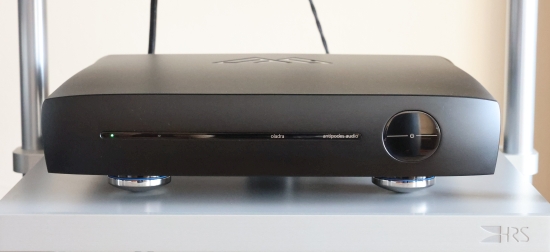
G4 Oladra
The new G4 Oladra incorporates double isolation, regeneration, and reclocking of all outputs with a new USB output and is fitted with an improved player engine. These changes are indicated to improve sound quality, most notably, the new USB output lifting the USB sound quality to match the sound quality of the S/PDIF, AES3, and I2S outputs. Other indicated benefits include an increase of 200% to 400% in system resources to improve system responsiveness and enterprise-level OS resilience against data loss in unusual AC power events. Lastly, an earth screw connector has been fitted to allow extra earthing or the use of aftermarket earthing solutions.
AMS v5.0.0 Web Interface
At around the same time as my Oladra was upgraded, Antipodes was working on finalizing the next version of their AMS Web Interface. From the start and throughout the years, AMS has always offered the best way to interface with a server’s settings. As the software was incrementally updated, the interface became ever slicker and ever better integrated within the Antipodes website. Previously, the only way to find your server without knowing its IP address was to navigate to “myantipodes” to see an overview of the Antipodes servers or streamers on the local network.
Since AMS v4, Antipodes has simplified the process by integrating this section into their main website. The aforementioned link still works, but the more elegant way to find your server and get to its Web Interface is by going to “antipodes.audio” and clicking Setup in the top menu. AMS v5 will likely be made available to the public by the time this review is published. Along with the revamping of AMS, the Antipodes website has recently been updated and looks slicker than ever.
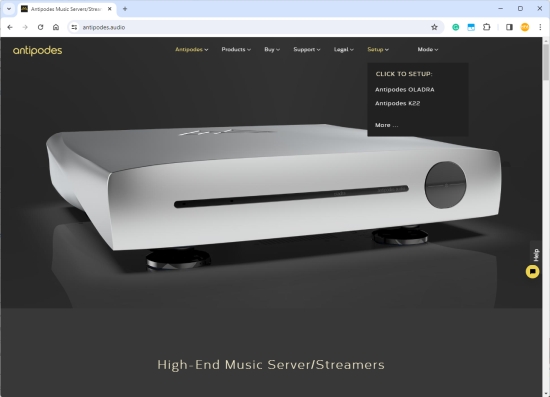
After clicking Antipodes Oladra, we are welcomed by the Solution Dashboard, which contains all the functionality you need to quickly set up the server as desired, such as Playback Method, Audio Output, DSD Method, and an update button. V5 combines all information on a single screen, replacing the separate screens for the server and player. Now, you can quickly see all the important information at a glance, such as CPU usage, memory usage, software version, MAC address, IP address, etc.
AMSv5 Solution Dashboard:
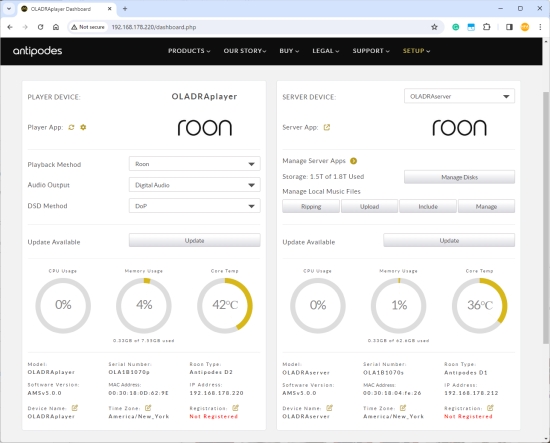
I already thought V4 looked super-slick, but I have to hand it to Antipodes for continually improving the software in just the right ways. The software not only looks great but also works super-intuitively.
Playback Method pull-down Menu, showing all the player options:
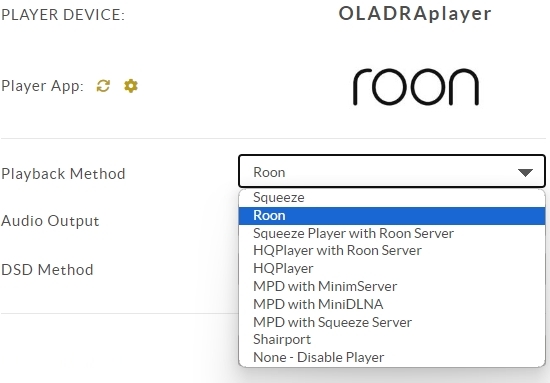
By selecting a pre-configured solution above, you prep both the server and player sections at the same time. Naturally, you can also change the preset configurations just the way you like.
As with all Antipodes models, users can easily choose/switch between using Squeeze, Roon, MPD, HQPlayer, UPnP/DLNA, and Shairport, right from the AMS web interface.
Although using only one Server App at a time is recommended for the best Sound Quality, you are free to enable as many as you like simultaneously in the Server Apps Dashboard.
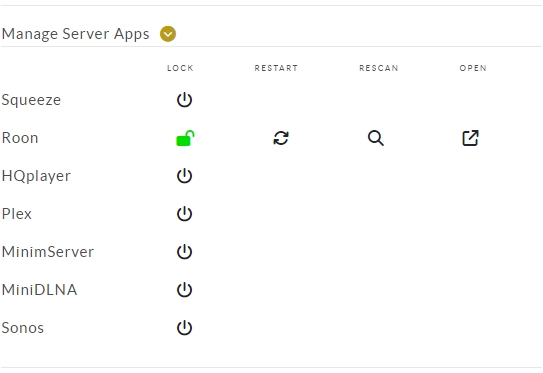
Various other screens allow full control of every aspect of the server and player apps, right down to diagnostics, troubleshooting, and even booking a support session. Please see the Guides section on the Antipodes website for all the ins and outs.
Running In
Although my unit was well run in before being updated, it’s always wise to avoid jumping to conclusions when listening to a newly updated model. The Oladra sounded fantastic from the very first moment I switched it on, but to be safe, I let it simmer a bit before making more serious assessments. When I listened to it again after two weeks, the sound had changed subtly, now just a little smoother, more relaxed, and more organic. Since I was working on a multitude of other reviews at the same time, it took me longer than normal to get started on this review, but that also allowed me to make sure the server was completely run in before making my final assessments.
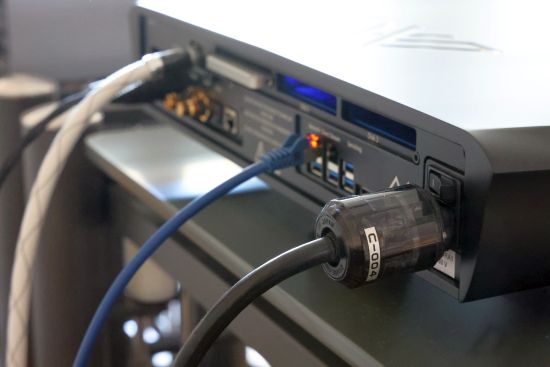
I tried various power cables when I first reviewed the Oladra and found that a standard Belden 19364 with Oyaide C-004 worked surprisingly well. After the upgrade, the cable worked just as well as before, so I felt no need to change it.
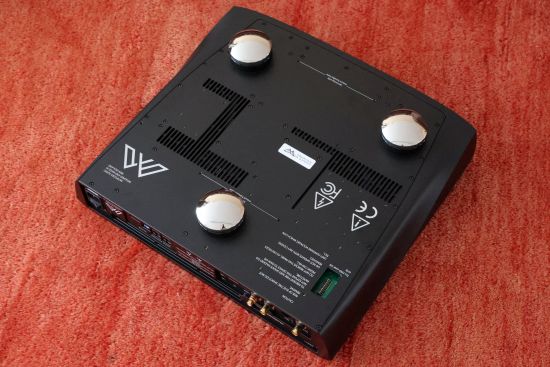
The I2S pinout can be assigned using DIP switches on the bottom of the unit.
The Oladra footers are a sandwich of two different metals with a thick polymer in between. This polymer is specifically designed for vibration control, and its tension is set to the correct level for optimum results. With such an inert chassis, Antipodes wanted to ensure that the Oladra was as isolated from the rack as possible without affecting the timbre. After trying various highly regarded footers, this quest led to the creation of these proprietary footers.
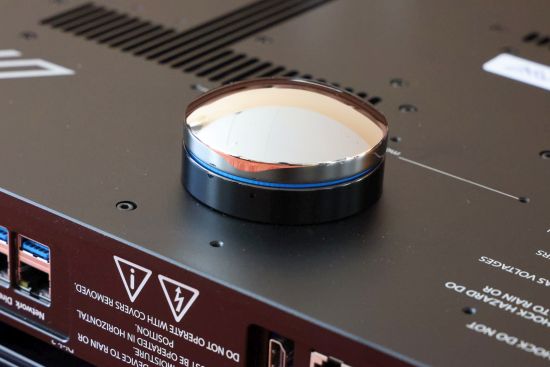
User-accessible bays on the back allow users to easily add up to 3 SSDs (up to 24TB) for music storage. The available digital outputs include Direct Stream Ethernet (RJ45), USB UAC-2 (A), S/PDIF (RCA & BNC), AES3 (3-Pin XLR), and I2S (HDMI & RJ45).
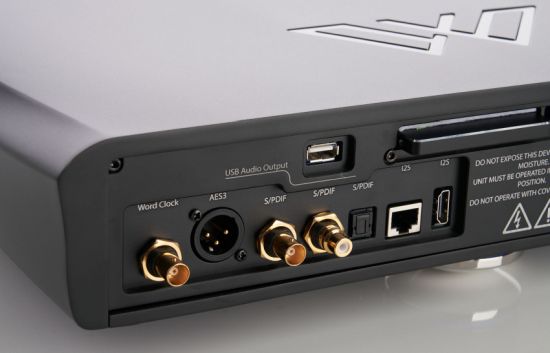
Review Context
The Oladra will be listened to mostly using Roon, although I should mention that Antipodes are a big fan of using Squeeze, either with Squeeze Server or as an endpoint combined with Roon.
The main system consists of the CH Precision C1.2 DAC, CH Precision L1 preamplifier, CH Precision A1.5 power amp, and Magico S1 MkII speakers. Other digital sources include the Grimm MU1 and Aqua La Diva M2 CD transport. The CH pre-amplifier and DAC are supported by an Artesania Exoteryc rack with Carbon Fiber Linear Arms, the CH power amplifier sits on an Aire rack with Carbon Fiber Linear Arms and KSH2 Krion shelves, and all other sources, including the Oladra, are supported by HRS EXR Racks.
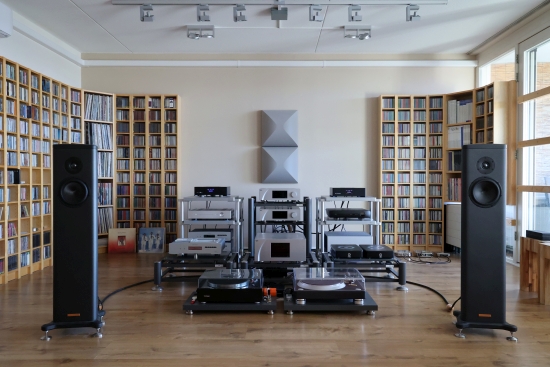
All analog interlinks are Driade Flow Link Reference 808, both balanced and unbalanced. The speaker cables are the Jorma Unity. The Oladra will be used both with its Reclocker AES/EBU output via a Jorma AES/EBU cable as well as with its updated USB output using a Mad Scientist Black Magic Gold, Vermouth Reference, and Final Touch Audio Sinope USB cables.




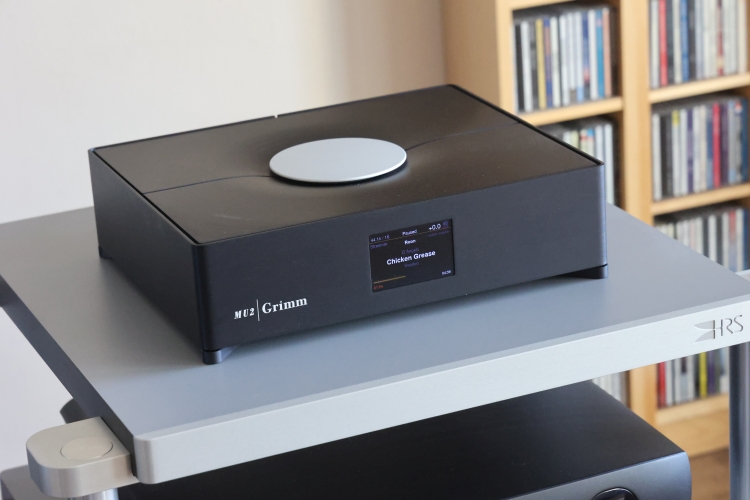
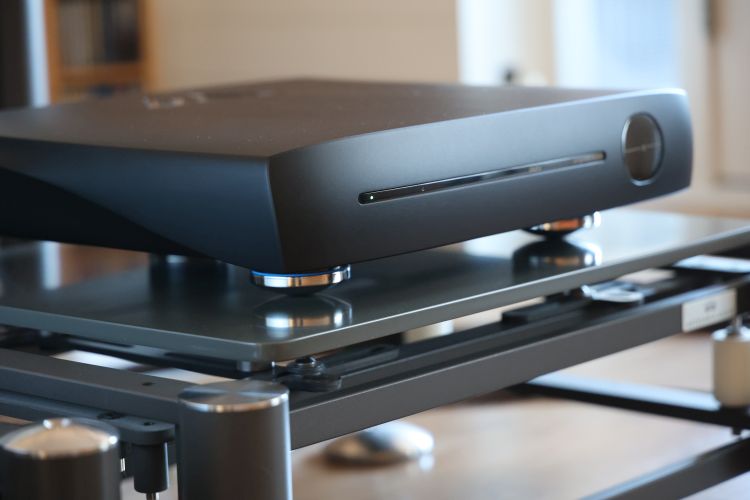
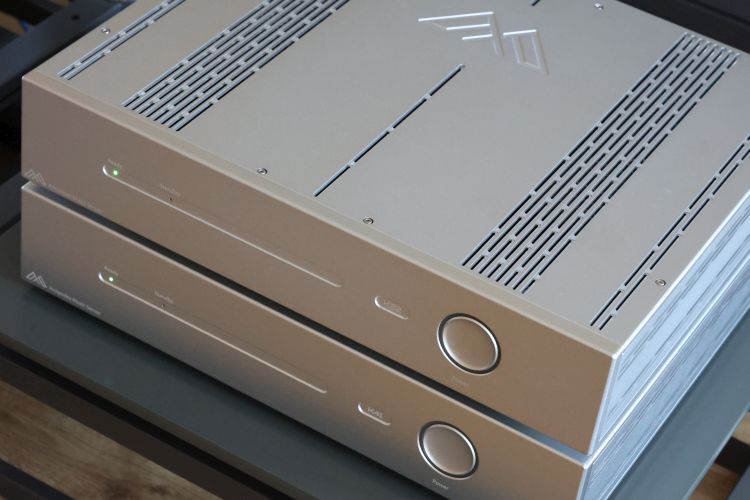
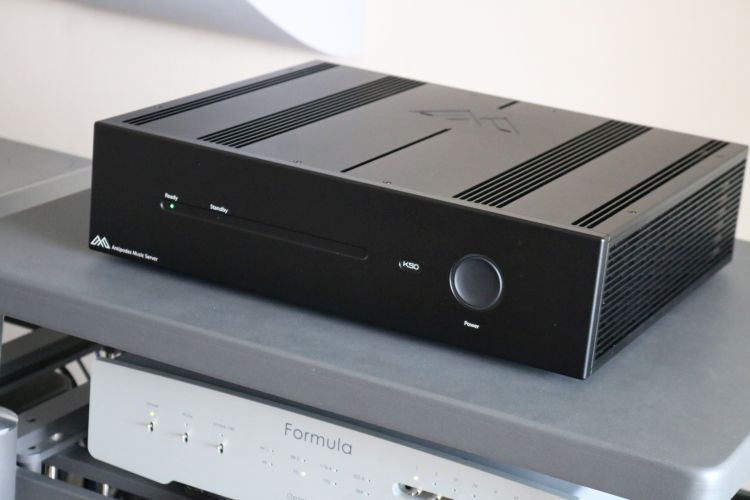
Hi Christiaan,
Great review! To complement your ongoing impressions and varied approaches, I’d like to point out that for the best sound quality (SQ) from the Oladra, you can simply choose “Squeeze (Auto)” in the Solution dashboard, and you’ll be enjoying Squeeze to Squeeze. It’s that simple!
Moreover, you are among the fortunate ones who have had the opportunity to try it out with the latest and greatest Antipodes software, AMSv5. I’m eagerly looking forward to giving that a try myself. It’s worth noting that you’re not alone in this, as Chris (The Computer Audiophile) also seems to prefer compromising on sound quality while listening to an Antipodes (top-of-the-line) server.
(…) It’s intriguing that Chris mentions a Squeeze allergy and seems willing to compromise SQ for a better interface, favoring JPLAY. Neither did Christiaan Punter push it any further in his recent review of the G4 Oladra:
”The Oladra will be listened to mostly using Roon, although I should mention that Antipodes are a big fan of using Squeeze, either with Squeeze Server or as an endpoint combined with Roon”. (…)
(link to AudiophileStyle omitted)
Please read this as a recommendation to achieve the highest level
Hi Paul, Naturally, I am aware that any Antipodes server can be used as a full Squeeze solution. Having reviewed nearly every Antipodes server that existed, I have also tested this in the past. But these days, I feel that Squeeze is a thing of the past, even if it still works very well and can indeed sound very good. And I applaud having compatibility built in so that the server caters to every possible required solution out there. I just don’t really see the point in revisiting this with every successive product from the same brand. I am actually not really willing to compromise on SQ to favor a nice user interface. Although I like the Roon interface a lot, I am actually on the fence about this. Roon SQ wavers and currently sounds very good again. All that said, since I already know what Squeeze and MPD can do and have written about this countless times, and I think that most users will prefer the higher level of sophistication of Roon, I left it at that and made note of both methods so users can decide for themselves.
Dag beste `Christiaan
Hoe verhoud de Oladra zich tot de `k50 en de K41. Dit omdat ik eigenlijk alleen het server gedeelte nodig heb, of presteert de Oladra over de gehele linie beter dan de k41/k50?
Hi Gert-Jan,
The Oladra’s superior sound is most prominent when it is used as an integrated server+player solution. It is still audible when it is used only as a server, but in that case, I would say the benefit is not large enough to justify the extra cost and I would recommend going for the K50 or K41 and use the savings elsewhere in the system. Between K50 and K41, the latter has the same server engine as the K50, and a similar power supply. In my tests (when the unit was still relatively new) it sounded bolder and more impactful than the K50 (which had been in service for years), but mostly when used as an complete solution together with the K22 player. When you only need a server, I would say the difference between K50 and K41 is again not significant enough to recommend the K50 over the K41. In a word: the smooth and full-bodied Antipodes sound is in all their products but it is most prominent in their player components.
Hi Christiaan
Als ik Roon met Squeeze wil gebruiken is de Oladra dan een goede keuze of ben ik dan beter uit met de K41
Met vriendelijke groet
Gert-Jan
Hi GJ,
The servers have the same advantages and relative differences when using Squeeze as when using Roon. The Oladra is their best server and that remains true with Roon, Squeeze, or any other protocol. If you only use the server part, you do lose a significant portion of what makes Antipodes servers special (the playback engine and reclocker outputs), but you will still be able to tell you’re using an Antipodes rather than, say, a standard NAS. The K41 is not better than the Oladra, rather, the other way around. Especially in terms of refinement, air, and resolution, the Oladra is best. But it may be a better choice for you as the remaining differences when using only the server part may not outweigh the extra cost.
Hi Christiaan
Hoe lang ( hoeveel uren ) moet een Antipodes server/speler inspelen voor dat hij op klank is ?.
It depends on the model. Oladra was already pleasant from the first minute but continued to bed in for months, it is now smoother and more relaxed than when I reviewed it. The K50 (with a linear power supply) was a little mechanical at first and developed mostly during the first few weeks, then continued more subtly for many months. I think the same goes for the K41.
Hoi Christiaan
Nu zo wel de K41/K51 en de Oladra goed zijn ingespeeld. Wat is jou totaal inventarisatie/ conclusie van het geheel?.
Hi,
If you think about it this way, comparing the three boxes reveals clear differences in their design. Oladra and K50 are distinct in concept, with Oladra incorporating more recent innovations. The K41, on the other hand, is purely a server and can be customized with a (different brand) player, power cords, and cables according to your preferences.
Oladra stands as the top model, providing exceptional performance with your music files when used as both a server and player. I agree with Christiaan’s view that the Antipodes distinguishable sound quality comes partially from the separation of server and player within the same device.
The only way to truly understand the differences is to listen to all three in your setup and decide based on your experience.
Hope this helps
I completely understand your decision, and I always appreciate your openness and teading here about your past challenges. I’ve had my share of trials as well. As a Squeeze + Squeeze user, I value not only the excellent sound quality but also the optimal performance it brings to Antipodes devices. Despite its less convenient interface, I advocate for a better GUI – perhaps a possibility in the future? Up to now, ROON hasn’t surpassed the SQ of Squeeze, and although it may seem like a thing of the past, I find using it remains the most rewarding for achieving the best listening sessions. It’s reassuring to see that you share a similar awareness. Happy listening!
Hi Paul, Nice feedback:-) Indeed, although Roon has had a big sonic dip until recently and currently sounds great again, it does not sound the same as Squeeze or MPD or UPnP, for that matter. It’s always had a different sonic perspective, even when it was still Sooloos. I most definitely understand why people would opt out of Roon, either for the reassuring comfort of the software never changing, or for the specific sound properties, or both. In the end, the beauty of the Antipodes servers is that all options are on the table! 🙂
Hi Christiaan,
Have you compared the performance of the Oladra (latest revision or otherwise) vs. the Taiko Extreme? Do you have any relevant comparisons between these two units?
All the best,
Matthew
Hi Matthew, Alas, as I work for Taiko Audio, I cannot write about their products as that would mean a conflict of interest.
Dear Sir, you have made an YouTube Video for Grimm Mu 1, where an Update for an infrared Remote Control-Receiver has been Shown. Than you have Showed how to Integrate a Silver infrared Remote Control. I Fall in love with this Silver thing , possibly Metal ir-remotecontrol. WHO is the Manufakturer?And where can i buy it? Kind regards, Mr. Rabe
Hi Mr. Rabe, that was an Audio GD remote control belonging to an Audio GD component. I’m not sure if the handset is available separately from Audio GD but you might be able to find a very similar version via Ali. Later, I utilized an Apple remote control which is nice and minimalistic and also made of aluminum. Do a Google search for “apple ir remote” and you’ll find it.
Hi Mr. Rabe, I just realized it was not an Audio GD but Jay’s Audio remote control.
Dag beste Christian
Ik heb een vraag. Als je de Oladra gebruik in de Roon/squeese configuratie hebben Roon software update’s dan nog invloed op de geluidsweergave ?.
Met vriendelijke groet
Gert-Jan Boer
Hi Gert-Jan, Alas, also when using Roon with Squeeze, the influence of the builds on the sound quality remains audible. It’s the Roon core (the server part) that is the (re)active component in this.
Hi Chtistian
By Builds do you mean the software updates ?so that I don’t misunderstand you?.
yours sincerely
Gert-Jan Boer
Hi Gert-Jan, indeed, with ‘Builds’, I am referring to the software update release versions.
hi Christian
thank you for your illuminating answers. I can do something with it. I wish you a nice Sunday evening and a good new week.
yours sincerely
Gert-Jan
hi Christian
I still have a few questions. The 1st question is, can I limit the consequences of roon software updates by using a Roon Nucleus? The 2nd question is, is there software for the Antipodes Oladra that does not affect the sound reproduction? or is it not there? The 3rd question is, can I undo the negative influence of the Roon software updates by retuning the set? Or should I buy a good CD player?
yours sincerely
Gert-Jan Boer
I have no personal experience with the Nucleus but given that I hear the effects with any Roon hardware, I’d assume the Nucleus would be the same. The impact of Roon server is heard as long as it is active on the network. However, the Oladra, like any Antipodes server, can run a range of server/player solutions. When using UPnP or Squeeze and not having Roon server running, there is no more impact. Regarding “negative” influences… this is a subjective matter. The sound of the software just wavers with the updates, and Roon has a certain character, just like all playback software. Whether or not you like the sound of Roon is a personal matter.
hi Christian
If I understand correctly, what you send in on one side of the player comes out on the other side. is this reasoning correct?
yours sincerely
Gert-Jan